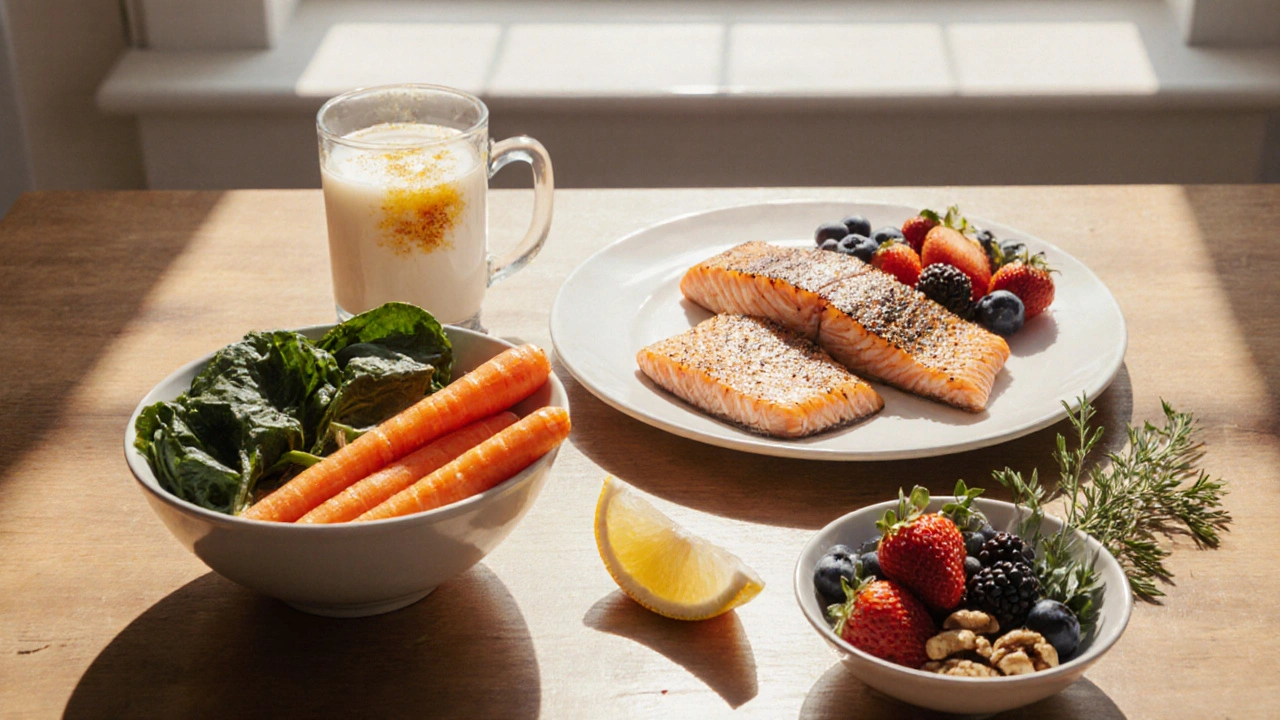Sickle Cell Diet: What to Eat and Avoid to Manage Symptoms
When you live with sickle cell anemia, a genetic blood disorder that causes red blood cells to become rigid and block blood flow. It's not just about medication—what you eat can directly affect how often you have pain crises and how much energy you have day to day. Many people don’t realize that a simple change in diet can help reduce hospital visits and improve quality of life. This isn’t about fancy superfoods or extreme restrictions. It’s about consistent, practical choices that support your body’s needs.
Hydration, the single most important factor in preventing sickle cell crises. When you’re dehydrated, your blood thickens, making it easier for those misshapen red blood cells to clump up and block vessels. Drinking water isn’t optional—it’s a daily requirement. Aim for at least 8 to 10 glasses, more if you’re active or in hot weather. Avoid sugary drinks and alcohol—they pull water out of your body instead of adding to it. Folic acid, a B vitamin your body needs to make new red blood cells. People with sickle cell anemia lose red blood cells faster than normal, so your body is working overtime to replace them. Foods like leafy greens, beans, fortified cereals, and eggs are easy ways to get enough. Your doctor might also recommend a supplement—talk to them before starting anything. And while iron is important for blood health, most people with sickle cell don’t need extra iron supplements. In fact, too much iron can be harmful. Your body already absorbs iron more easily because of the disease, so avoid iron-fortified foods unless your doctor says otherwise.
Antioxidants, like vitamins C and E, help fight inflammation and protect cells from damage. Berries, citrus fruits, nuts, seeds, and colorful vegetables like bell peppers and sweet potatoes are great sources. These foods don’t cure sickle cell, but they help your body handle stress better. Zinc, found in meat, shellfish, and legumes, also plays a role in healing and immune function—both critical when you’re fighting frequent infections. Avoid processed foods high in salt, sugar, and unhealthy fats. They don’t just add empty calories—they can increase inflammation and make you feel worse over time. Skip the fast food, sugary snacks, and fried items. Instead, focus on whole, unprocessed foods that give your body real fuel.
You don’t need a perfect diet. You need a consistent one. Small, steady changes matter more than big, short-term fixes. Plan meals ahead. Keep healthy snacks on hand. Drink water before you feel thirsty. These habits build up over time—and they can make a real difference in how you feel day to day. Below, you’ll find real, practical advice from people who’ve lived this, backed by research and experience. No fluff. Just what works.
How Diet and Nutrition Can Help Manage Sickle Cell Anemia
Learn how specific foods, nutrients, and hydration strategies can help manage sickle cell anemia, reduce crises, and boost overall health.
More
